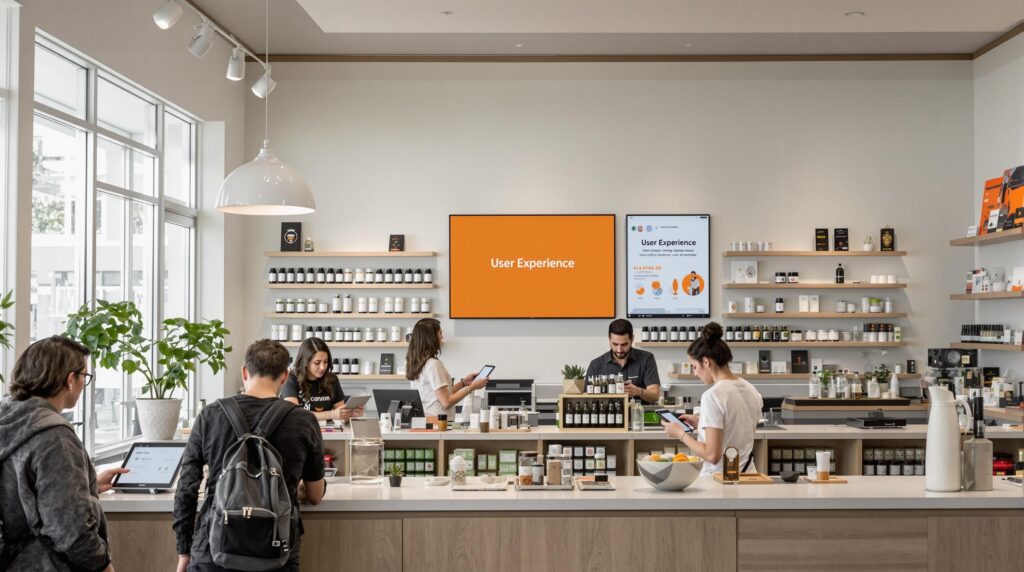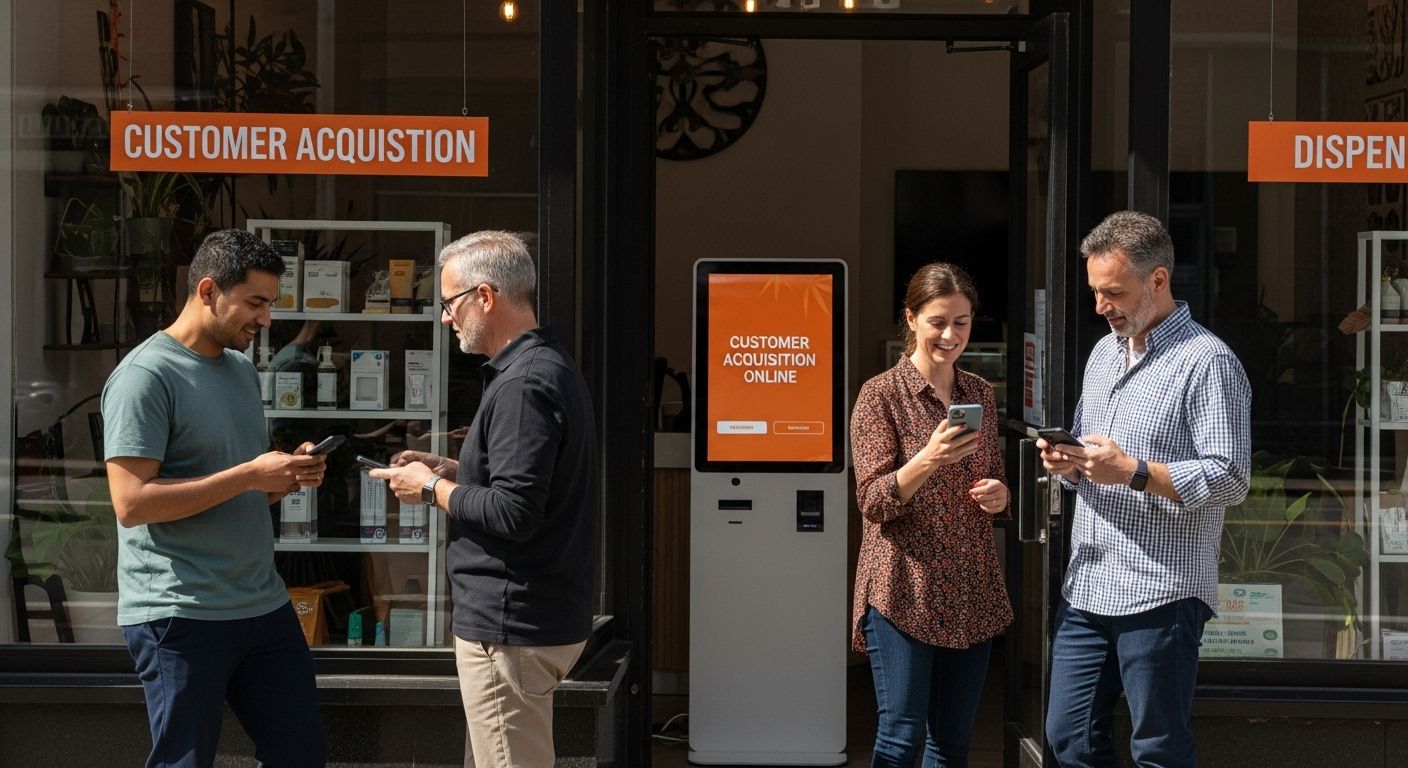Cannabis dispensaries are fighting for attention online, as more shoppers turn to the internet to explore options and place orders. Check this out. Over 65 percent of cannabis retailer web traffic now comes from mobile devices. The surprising part is that a beautiful site alone will not get you noticed or trusted. In 2025, the real winners are those that combine seamless user experience and smart SEO to connect, convert, and keep customers coming back.
Table of Contents
- Why User Experience And Seo Matter For Dispensaries
- Optimizing Local Seo For Cannabis Businesses
- Improving Site Navigation And Mobile Experience
- Content Strategies To Engage And Convert Customers
Quick Summary
| Takeaway | Explanation |
|---|---|
| User experience is crucial for cannabis dispensaries | A seamless digital presence helps attract and convert customers, acting as the first point of interaction. |
| Optimize for local SEO to enhance visibility | Utilize Google Business Profile and localized content to dominate regional searches and draw nearby customers. |
| Mobile optimization is essential due to user behavior | With over 65% of traffic from mobile devices, ensure fast load times and responsive interfaces for user retention. |
| Create engaging, educational content | Targeted, informative materials build trust and can effectively convert customers in a complex regulatory environment. |
| Utilize user feedback for continuous improvement | Analyze user interactions through feedback tools to refine navigation and enhance the site experience continuously. |
Why User Experience and SEO Matter for Dispensaries
The digital marketplace for cannabis dispensaries has transformed dramatically, making user experience (UX) and search engine optimization (SEO) critical components of business success. In an increasingly competitive online environment, dispensaries must recognize that their digital presence is often the first point of customer interaction.
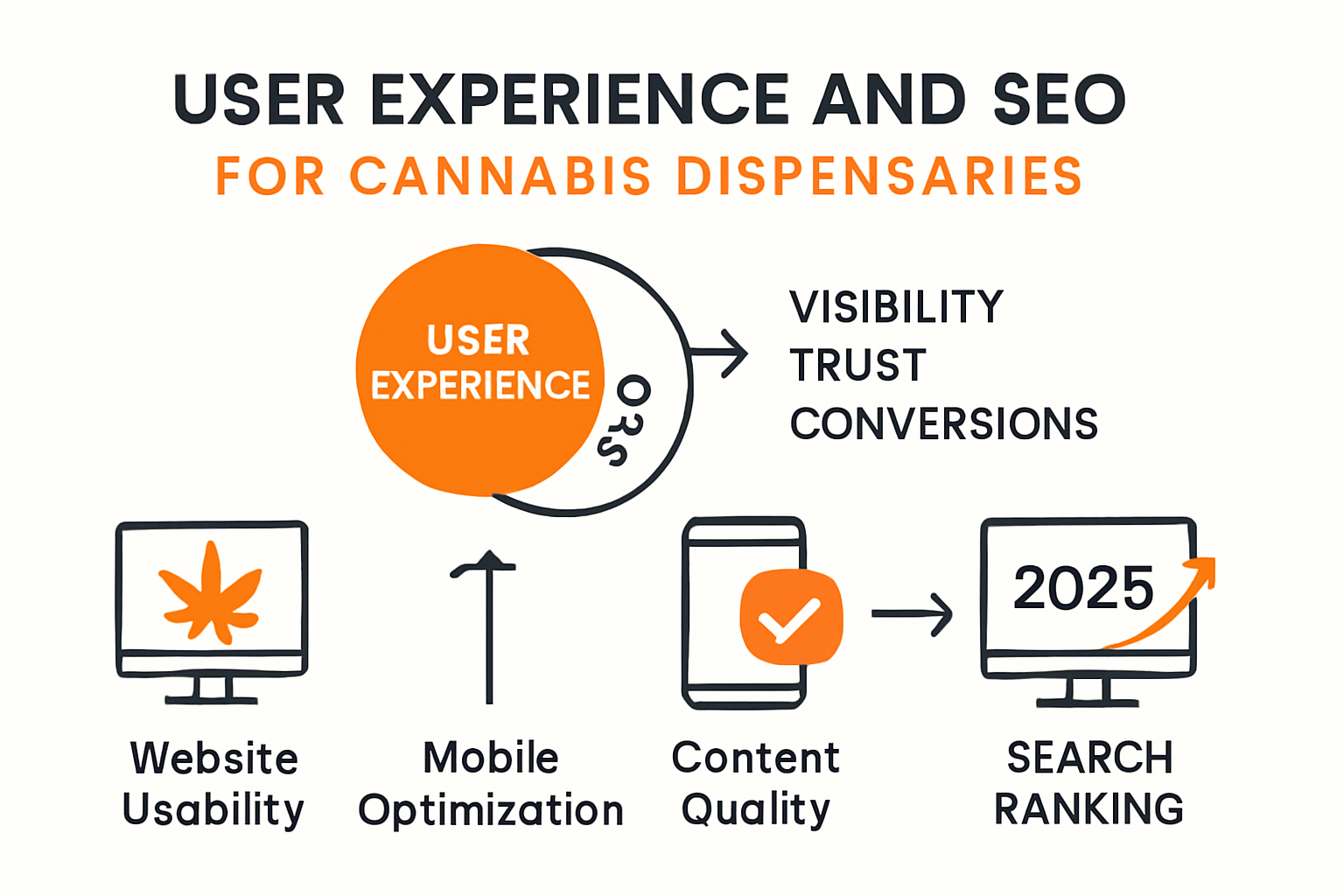
The Digital Gateway for Cannabis Consumers
Modern cannabis consumers rely heavily on online platforms to research, compare, and purchase products. According to research published in the National Center for Biotechnology Information, effective online promotional practices are essential for dispensaries to build trust and navigate complex regulatory landscapes. A well-designed website does more than showcase products it creates a seamless, informative experience that converts potential customers.
The numbers tell a compelling story. Marijuana Venture reports that over 65% of web traffic for cannabis retailers comes from mobile users, underscoring the critical importance of mobile-friendly design and responsive interfaces. Dispensaries that fail to optimize their digital platforms risk losing significant market share to more technologically adept competitors.
Navigating Search Engine Visibility
Search engine optimization is no longer optional for cannabis dispensaries it is a fundamental requirement for survival. The intricate algorithms of search engines like Google prioritize websites that offer exceptional user experiences. This means fast loading times, intuitive navigation, clear product information, and mobile responsiveness are not just design preferences but direct contributors to search ranking success.
The BSW Report highlights emerging SEO trends that specifically impact dispensaries, noting the growing significance of voice search and natural language optimization. Dispensaries must now consider how potential customers might verbally search for products, tailoring their content and metadata to match these conversational queries.
Moreover, search engines have become increasingly sophisticated in evaluating website quality. They assess factors like user engagement time, bounce rate, and content relevance. A dispensary website that provides a smooth, informative user journey will not only attract more visitors but also signal to search engines that it offers genuine value.
Building Trust in a Regulated Industry
For cannabis dispensaries, UX and SEO are more than marketing tactics they are trust-building mechanisms. In an industry with complex legal restrictions and evolving consumer perceptions, a professional, easy-to-navigate online presence can help normalize and legitimize a business.
Transparent product information, clear age verification processes, and intuitive website design demonstrate a commitment to responsible consumer interaction. These elements reassure potential customers and regulatory bodies alike that the dispensary operates with professionalism and transparency.
The digital landscape of 2025 demands more than static websites. Successful cannabis dispensaries will be those that view their online platforms as dynamic, customer-centric experiences continually refined through data-driven insights and user feedback. By prioritizing user experience and strategic SEO, dispensaries can transform their digital presence from a mere online brochure to a powerful customer acquisition and retention tool.
Optimizing Local SEO for Cannabis Businesses
Local search engine optimization (SEO) represents a critical strategy for cannabis businesses seeking to dominate their regional market and attract nearby customers. Unlike traditional digital marketing, local SEO requires a nuanced approach that combines geographic specificity with strategic online visibility.
Mastering Google Business Profile Optimization
According to Semrush, local SEO is fundamental for cannabis businesses to enhance visibility and attract customers within their immediate geographic area. Google Business Profile emerges as the cornerstone of local digital marketing strategy. Dispensaries must meticulously complete their profile, ensuring every detail reflects accurate business information.
Key optimization elements include precise location details, operating hours, high-quality images of the dispensary and products, and consistent contact information. The Cannabis Marketing Association recommends conducting thorough keyword research to understand local consumer search behaviors and integrate those insights directly into business profile descriptions.
Customers increasingly rely on local search results to make purchasing decisions. A comprehensive, well-maintained Google Business Profile signals credibility and increases the likelihood of appearing in local map pack results. This visibility can dramatically improve foot traffic and online conversions for cannabis dispensaries.
Below is a table summarizing key elements for optimizing a Google Business Profile as discussed above.
| Element | Purpose/Benefit |
|---|---|
| Accurate Location Details | Ensures customers can find the business easily |
| Up-to-date Operating Hours | Prevents confusion and builds trust |
| High-Quality Images | Enhances credibility and user appeal |
| Consistent Contact Information | Builds trust and ensures accessibility |
| Keyword-rich Descriptions | Improves search visibility based on consumer habits |
Strategic Local Content and Citation Management
Building a robust local SEO strategy extends beyond Google Business Profile. Dispensaries must develop location-specific content that resonates with local audiences. This approach involves creating web pages and blog posts that address regional cannabis consumption trends, local regulations, and community interests.
Oneupweb emphasizes the critical importance of maintaining consistent NAP (Name, Address, Phone) information across all online platforms. Discrepancies in business listings can negatively impact search rankings and confuse potential customers. Dispensaries should conduct regular audits of their online citations, ensuring uniformity across directories, review sites, and social media platforms.
Local backlink acquisition represents another powerful technique for improving local search rankings. Collaborating with local businesses, sponsoring community events, or engaging in region-specific cannabis education initiatives can generate high-quality, geographically relevant backlinks that boost search engine credibility.
Navigating Regulatory Compliance in Local SEO
Cannabis businesses face unique challenges in local SEO due to strict advertising regulations. Successful dispensaries must craft their local SEO strategy with careful consideration of legal constraints. This means creating informative, compliant content that provides value to potential customers without making unsubstantiated claims.
Mobile optimization becomes crucial in local SEO, with most local searches conducted on smartphones. Dispensaries must ensure their websites load quickly, display correctly on mobile devices, and provide easy navigation for users seeking product information, store locations, and purchasing options.
The landscape of local SEO for cannabis businesses continues to evolve. Success requires a dynamic approach that combines technical optimization, content strategy, and a deep understanding of local market dynamics. By implementing these targeted local SEO techniques, dispensaries can effectively increase their digital visibility, attract nearby customers, and establish themselves as authoritative local cannabis providers in an increasingly competitive market.
Improving Site Navigation and Mobile Experience
In the rapidly evolving digital landscape of cannabis retail, site navigation and mobile experience have become critical differentiators for dispensaries seeking to attract and retain customers. The user’s journey through a digital platform can make or break their purchasing decision, making intuitive design and seamless mobile functionality paramount.
Designing Intuitive Navigation Structures
According to advanced SEO guides, Google prioritizes mobile-first indexing, which means the mobile version of a website is now the primary reference point for search engine rankings. For cannabis dispensaries, this translates to creating navigation systems that are not just visually appealing but fundamentally user-friendly.
Effective navigation begins with understanding user behavior. Research from Higher Tide indicates that successful cannabis websites implement several key design principles. These include simple menu structures, prominent search bars, clear product categorization, and intuitive filtering options. Customers should be able to find their desired products within three clicks, reducing frustration and potential bounce rates.
Important navigation elements include descriptive menu labels, breadcrumb trails that show users their current location within the site, and consistent placement of key navigation elements across different pages. Visual cues and hierarchical design help users understand the website’s structure quickly and efficiently.
The following table summarizes essential features of intuitive navigation structures for cannabis dispensary websites.
| Navigation Feature | Benefit |
|---|---|
| Simple Menu Structure | Easy access to main sections |
| Prominent Search Bar | Quick product/location search |
| Clear Product Categorization | Reduces confusion, speeds up browsing |
| Intuitive Filtering Options | Helps users find specific items faster |
| Consistent Navigation Placement | Improves familiarity and usability |
| Breadcrumb Trails | Shows site location; allows easy backtracking |
Mobile Optimization Strategies
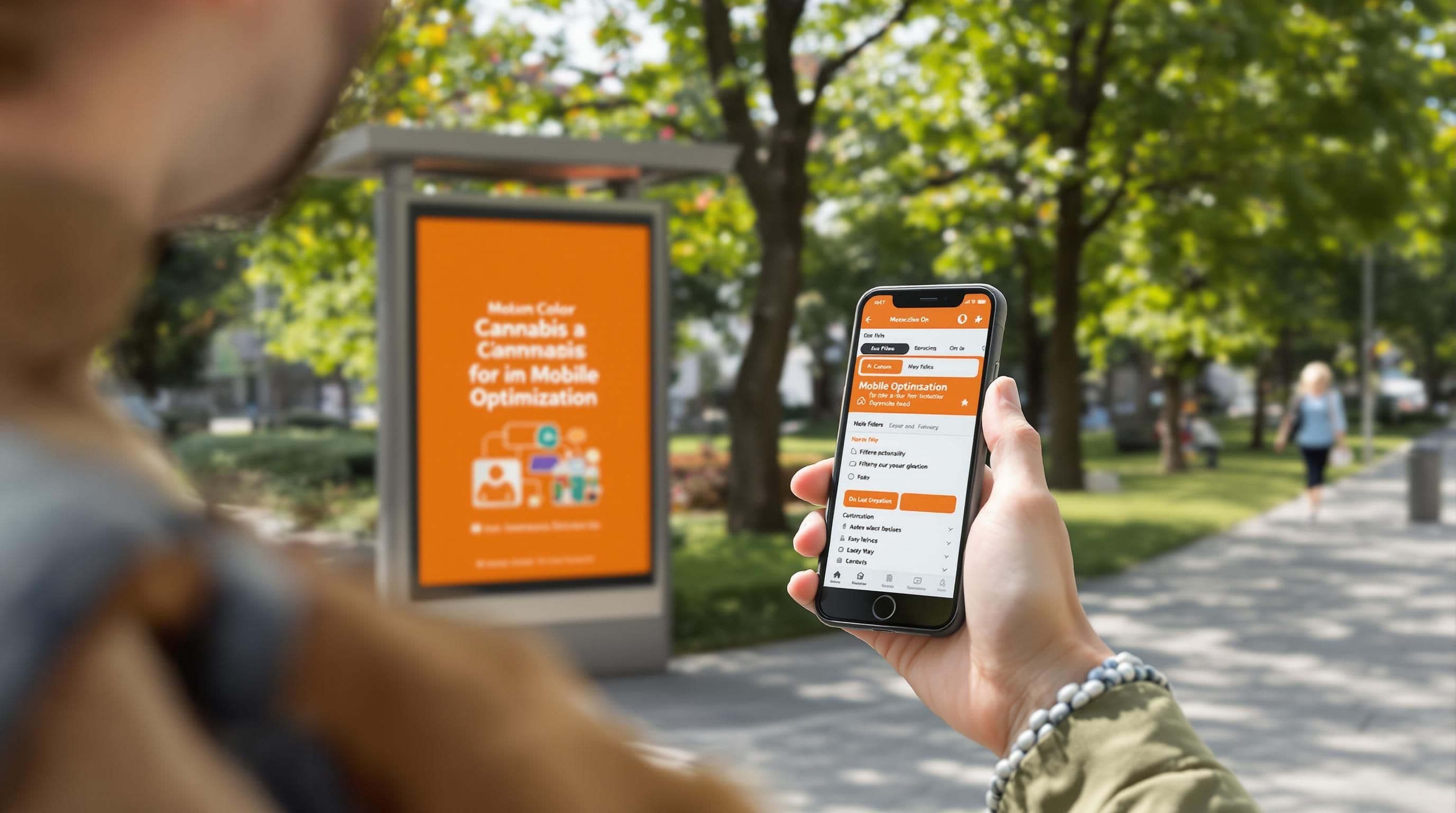
Mobile optimization goes far beyond responsive design. With over 65% of cannabis retail web traffic coming from mobile devices, dispensaries must create mobile experiences that are not just scaled-down versions of desktop sites but fully integrated, touch-friendly interfaces.
Page load speed emerges as a critical factor. Mobile users expect websites to load within two seconds, and every additional second of loading time increases the likelihood of user abandonment. Techniques like image compression, minimizing server response times, and leveraging browser caching become essential for maintaining an optimal mobile experience.
Touch-friendly interfaces require larger buttons, simplified forms, and gesture-based interactions that feel natural on smartphone screens. Dropdown menus, expandable sections, and thumb-friendly navigation patterns can significantly enhance the mobile user experience.
Accessibility and User Experience Considerations
Accessibility represents a crucial yet often overlooked aspect of site navigation. Cannabis dispensaries must ensure their digital platforms are usable by individuals with various disabilities. This includes implementing proper color contrast, providing alternative text for images, ensuring keyboard navigability, and creating clear, readable typography.
User feedback mechanisms play a critical role in continuous navigation improvement. Implementing tools like heatmaps, user session recordings, and short feedback surveys can provide invaluable insights into how customers interact with the website. These data points help dispensaries iteratively refine their navigation structures and mobile experiences.
The intersection of SEO, user experience, and mobile optimization represents a complex but essential strategy for cannabis dispensaries in 2025. Websites that prioritize intuitive navigation, lightning-fast mobile performance, and inclusive design will not only rank higher in search results but also build stronger connections with their digital audience. Success lies in viewing the website not just as a sales platform, but as a comprehensive, user-centric digital experience that reflects the professionalism and customer commitment of the dispensary.
Content Strategies to Engage and Convert Customers
In the competitive cannabis dispensary market of 2025, content strategy has evolved from simple product listings to sophisticated, targeted approaches that educate, engage, and convert potential customers. Successful dispensaries recognize that content is not just about selling products but about building trust, providing value, and creating meaningful connections with their audience.
Crafting Localized and Educational Content
According to research from Oneupweb, creating dedicated, localized landing pages for each dispensary location significantly enhances visibility in local search results. These pages go beyond basic location information, offering deep insights into local cannabis trends, product recommendations, and community-specific educational content.
Educational content becomes a powerful conversion tool. By addressing common questions, demystifying cannabis products, and providing clear, scientific information, dispensaries can position themselves as trusted resources. This approach is particularly critical given the complex regulatory environment and ongoing public misconceptions about cannabis.
A study examining sponsored content in online health searches reveals that indirect marketing approaches that explicitly advocate a product’s effectiveness can significantly influence user decision-making. For cannabis dispensaries, this means creating content that subtly highlights product benefits while maintaining transparency and educational integrity.
Multimedia Content and User Engagement
Modern content strategies extend far beyond traditional text-based approaches. Video content, interactive product guides, and user-generated content platforms have become essential tools for engagement. Short-form videos explaining product effects, consumption methods, and potential benefits can dramatically increase user interaction and trust.
User-generated content, such as customer reviews, testimonials, and community forums, provides social proof and creates a sense of community. Dispensaries can leverage these platforms to showcase authentic experiences, address customer concerns, and build a more transparent brand image.
Interactive content like product recommendation quizzes, dosage calculators, and strain comparison tools can transform passive website visitors into active, engaged potential customers. These tools not only provide value but also collect valuable user data that can be used to personalize future marketing efforts.
Compliance and Authentic Storytelling
Navigating the strict regulatory landscape requires a nuanced approach to content creation. Successful dispensaries develop content strategies that balance educational value, brand personality, and regulatory compliance. This means avoiding direct medical claims, using scientifically backed information, and creating content that focuses on user experience and product characteristics.
Storytelling emerges as a powerful content strategy. By sharing the stories behind their products, highlighting sustainable growing practices, discussing community involvement, and showcasing the human side of their business, dispensaries can create emotional connections that transcend traditional product marketing.
Content personalization becomes increasingly sophisticated in 2025. Advanced analytics and AI-driven tools allow dispensaries to create highly targeted content experiences. By understanding user preferences, consumption habits, and browsing behaviors, businesses can develop content that speaks directly to individual customer needs and interests.
The future of content strategy for cannabis dispensaries lies in creating holistic, value-driven experiences. It’s about moving beyond transactional relationships and building genuine connections. Successful dispensaries will be those that view content not as a marketing tool, but as a comprehensive approach to customer education, engagement, and empowerment.
Frequently Asked Questions
What is the importance of user experience for cannabis dispensaries?
A seamless user experience is crucial for cannabis dispensaries as it directly influences customer attraction and retention. An easy-to-navigate, informative website enhances customer engagement and helps convert potential buyers.
How can cannabis dispensaries improve their local SEO?
Cannabis dispensaries can improve their local SEO by optimizing their Google Business Profile, using localized content, and maintaining consistent NAP (Name, Address, Phone) information across all online platforms.
Why is mobile optimization essential for dispensary websites?
With over 65% of cannabis retail traffic coming from mobile devices, dispensaries must ensure their websites load quickly and provide a user-friendly mobile experience to retain customers and improve search rankings.
What types of content should cannabis dispensaries create to engage customers?
Cannabis dispensaries should focus on creating localized and educational content, multimedia resources like videos, and interactive tools. This approach helps build trust while providing valuable information in a complex regulatory environment.
Ready to Transform Your Dispensary’s Digital Results in 2025?
You have seen how user experience, mobile optimization, and smart SEO will set cannabis dispensaries apart in a crowded market. Slow sites and confusing navigation put you at risk while your competitors keep growing. If you want more local customers, better rankings, and higher trust, you need a team that understands the complex needs of regulated industries—and knows exactly how to get your dispensary found.
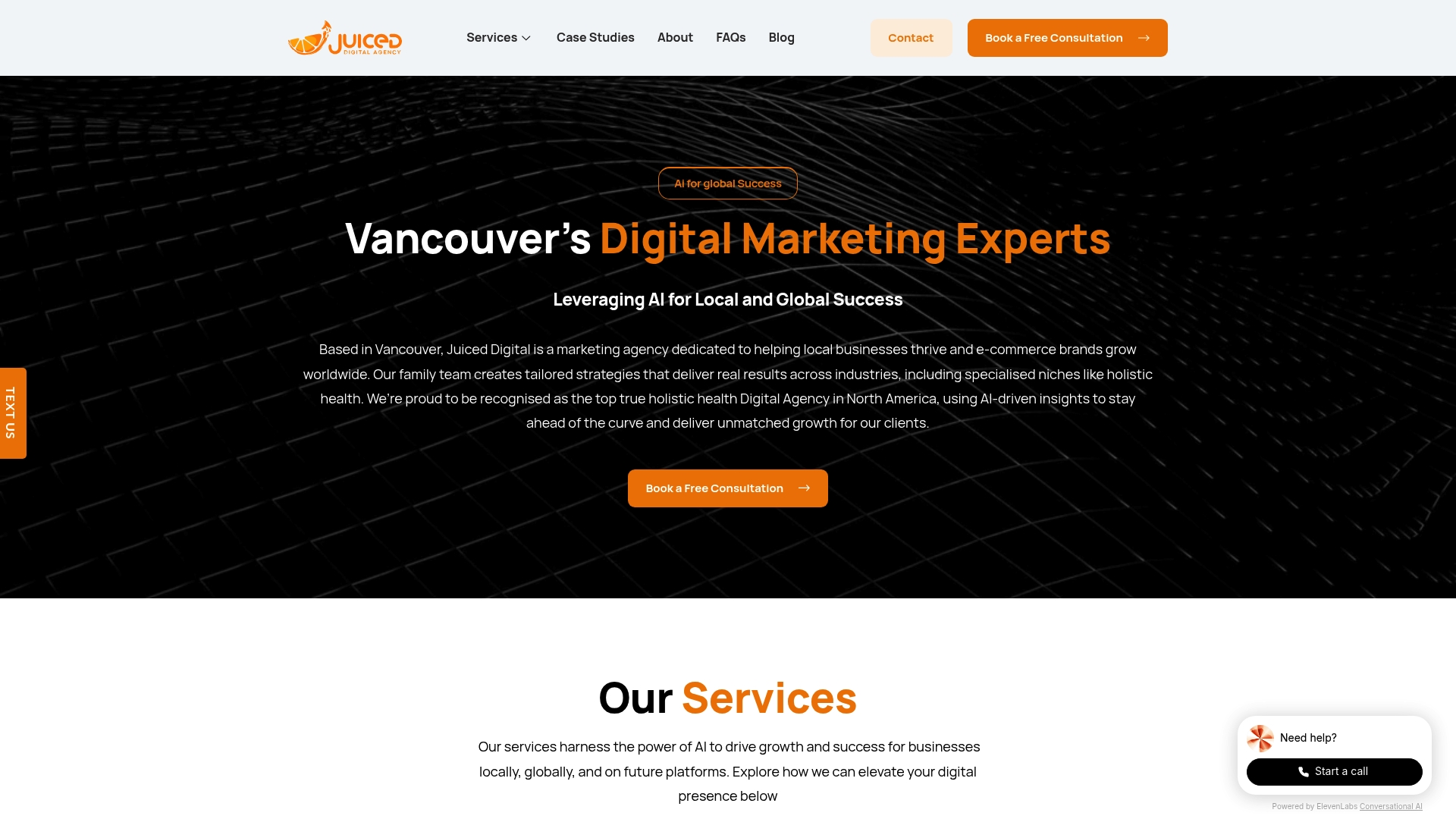
At Juiced Digital, we use a proven mix of technical audits, advanced content tactics, and AI-powered automations for real cannabis SEO growth. Our work puts you at the top of local searches when your customers are looking and delivers the easy, seamless experiences they expect. Don’t let outdated strategies hold you back. Visit Juiced Digital now and let’s build your ROI-focused blueprint for 2025. Your next loyal customer is already searching for you.
